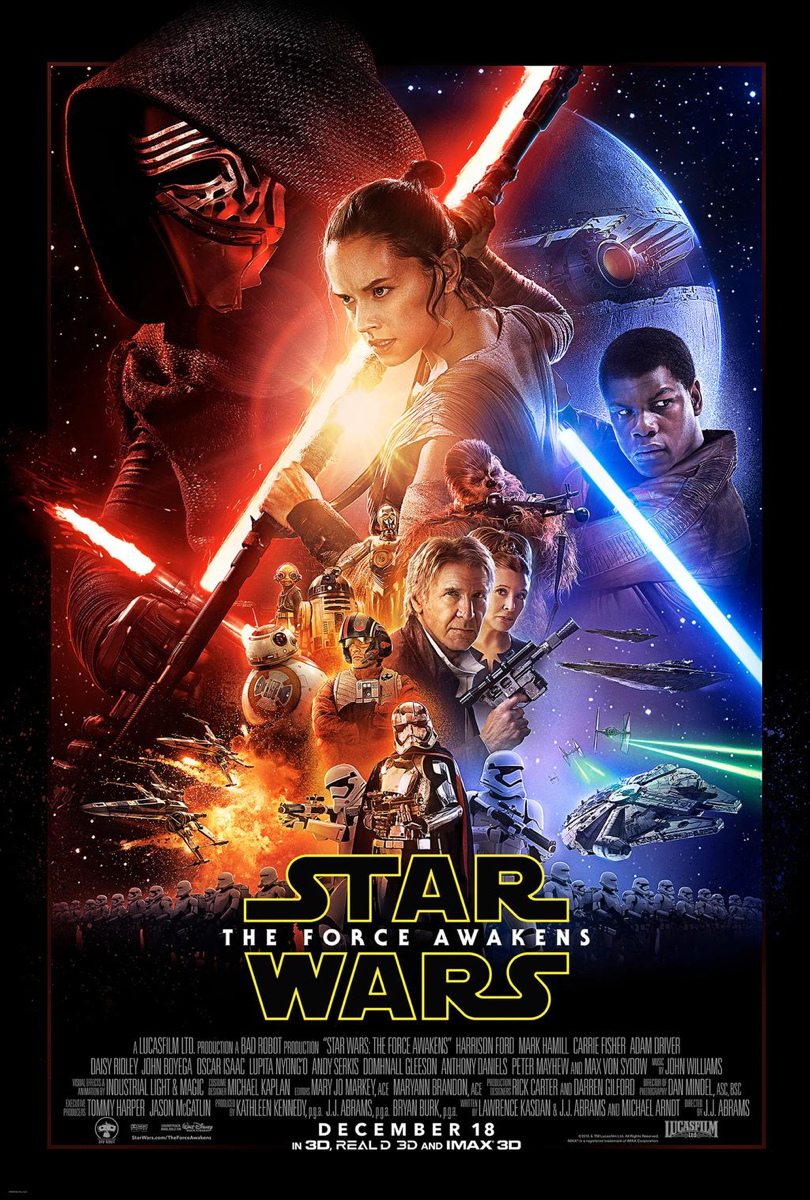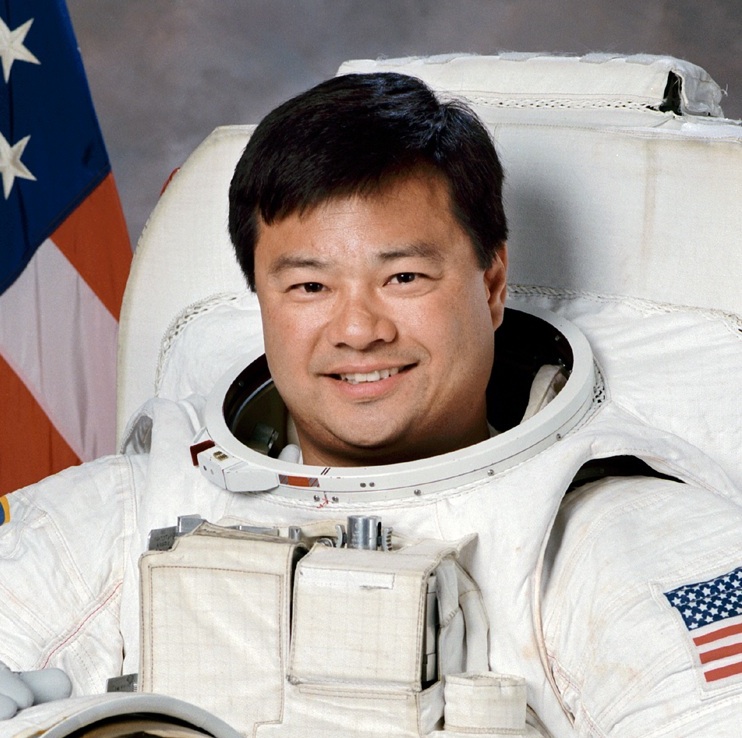
AstroCritic Review: 'Star Wars: The Force Awakens'

Leroy Chiao is a former NASA astronaut and ISS commander. He is the co-founder and CEO of OneOrbit and serves as the special adviser for human spaceflight to the Space Foundation, and the Houston Association for Space and Science Education. Chiao contributed this article to Space.com's Expert Voices: Op-Ed & Insights.
NOTE: Minimal spoilers follow
It was with cautious anticipation that I went to see "Star Wars: The Force Awakens." I'm always careful to try and not get caught up in pre-release motion picture hype — I don't want my expectations built so high that I'm disappointed.
I don't think this film lived up to the hype, but I was not disappointed. It's a good story, with more than a few twists, turns and surprises.
What's old is new again
The film does a nice job blending the original "Star Wars" story with a new one and its major characters. The original characters play integral parts in the film, they don’t just make feel-good cameos — indeed, the new film starts with a cute little droid, carrying a secret vital to the resistance, which must not be taken by the evil First Order (think Empire). The droid, along with some of our heroes, escapes from the enemy mothership, to begin the adventure. ['Star Wars Episode VII: The Force Awakens' in Photos ]
The major cast members of the original "Star Wars" are all here. Chewy looks great. He has aged extremely well, looking exactly the same as 38 years ago. Han Solo is looking a bit older, but he still has the charisma and charm of the original. Princess (now General) Leia and Luke Skywalker seem a little more tired, but I suppose they do share genetics, as brother and sister.
The main protagonists (the young ones) are Rey (Daisy Ridley), Finn (John Boyega) and Poe (Oscar Isaac). While they don't quite mirror the original Leia, Han and Luke, they mesh together to complete the circle, like the original actors did. Add in the new, younger, and arguably less powerful Darth Vader character, Kylo Ren and you have an altered set of the original cast. The two sets run into each other (almost literally).
Get the Space.com Newsletter
Breaking space news, the latest updates on rocket launches, skywatching events and more!
This may sound like a recipe for disaster, but they pull it off.
Don't think too hard about the science
I always do my best to check my astronaut and engineer hats at the door of space-related movies, especially for science-fantasy films. But I can't help but wonder a little about such things like: "How would one fly in formation at light speeds?" "How do the ships stay together during the transitions to and from light speed?" And "What source of fuel do these spacecraft use, such that they can enter a planet's atmosphere, fight extended aerial battles, and then not only return to orbit, but reach escape velocity to rendezvous with a mothership?" They also seem to fly like atmospheric vehicles while in space, complete with whooshing sounds, graceful arcing turns — I know, I know ... It wouldn't be the same.
Real spaceflight seems so much more boring (it's not!).
One of the most impressive things about the original "Star Wars" movie when it was released in 1977 was that the special effects and fantastic surround sound were brand-new. And of course, the story was unlike any other that had been made into a major motion picture. Because of those factors, it awed audiences as no film before.
In the case of Episode VII, the special effects and sound are even better. But, there is no way to recreate the exciting new feeling, like that inspired by the original. Call me old-fashioned, but I'm kind of a purist: I drink black coffee and chilled vodka, though usually not together.
Nonetheless, this is a nicely done film, with plenty of action, thrills, and of course, a conclusion with several open ends for sequels.
AstroCritic Rating: 3.5 Out of 5 Stars
Follow all of the Expert Voices issues and debates — and become part of the discussion — on Facebook, Twitter and Google+. The views expressed are those of the author and do not necessarily reflect the views of the publisher. This version of the article was originally published on Space.com.
Join our Space Forums to keep talking space on the latest missions, night sky and more! And if you have a news tip, correction or comment, let us know at: community@space.com.
Leroy Chiao is a former NASA astronaut and International Space Station (ISS) commander. Chiao holds appointments at Rice University and the Baylor College of Medicine. Chiao has worked extensively in both government and commercial space programs, and has held leadership positions in commercial ventures and NASA. Chiao is a fellow of the Explorers Club, and a member of the International Academy of Astronautics and the Committee of 100. Chiao also serves in various capacities to further space education. In his 15 years with NASA, Chiao logged more than 229 days in space, more than 36 hours spent in Extra-Vehicular Activity (spacewalks). From June to September 2009, he served as a member of the White House appointed Review of U.S. Human Spaceflight Plans Committee, and currently serves on the NASA Advisory Council. Chiao studied chemical engineering at the University of California, Berkeley, earning a Bachelor of Science degree in 1983. He continued his studies at the University of California at Santa Barbara, earning his Master of Science and Doctor of Philosophy degrees in 1985 and 1987. Prior to joining NASA in 1990, he worked as a research engineer at Hexcel Corp. and then at the U.S. Department of Energy's Lawrence Livermore National Lab. Dr. Chiao left NASA in December, 2005 following a 15-year career with the agency. Chiao studied chemical engineering at the University of California, Berkeley, earning a Bachelor of Science degree in 1983. He continued his studies at the University of California at Santa Barbara, earning his Master of Science and Doctor of Philosophy degrees in 1985 and 1987. Prior to joining NASA in 1990, he worked as a research engineer at Hexcel Corp. and then at the U.S. Department of Energy's Lawrence Livermore National Lab.










